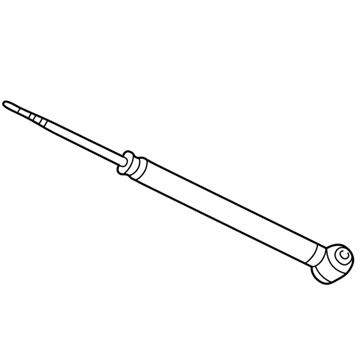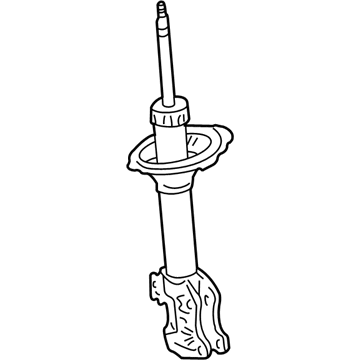×
ToyotaParts- Hello
- Login or Register
- Quick Links
- Live Chat
- Track Order
- Parts Availability
- RMA
- Help Center
- Contact Us
- Shop for
- Toyota Parts
- Scion Parts
My Garage
My Account
Cart
OEM 2005 Toyota Echo Shock Absorber
Suspension Shock Absorber- Select Vehicle by Model
- Select Vehicle by VIN
Select Vehicle by Model
orMake
Model
Year
Select Vehicle by VIN
For the most accurate results, select vehicle by your VIN (Vehicle Identification Number).
2 Shock Absorbers found
2005 Toyota Echo Shock Absorber
Part Number: 48530-59895$59.83 MSRP: $83.98You Save: $24.15 (29%)Ships in 1-3 Business DaysProduct Specifications- Other Name: Absorber Assembly, Shock; Shock Absorber, Rear; Suspension Strut Assembly Kit; Strut Shock Kit; Complete Strut; Shock; Absorber Assembly, Shock, Rear Passenger Side; Absorber Assembly, Shock, Rear Driver Side
- Manufacturer Note: MARK 48530-52880
- Replaces: 48530-59715
- Item Weight: 6.90 Pounds
- Item Dimensions: 25.8 x 6.8 x 5.8 inches
- Condition: New
- Fitment Type: Direct Replacement
- SKU: 48530-59895
- Warranty: This genuine part is guaranteed by Toyota's factory warranty.
- Product Specifications
- Other Name: Absorber Assembly, Shock; Front Suspension Strut; Strut Assembly Kit; Complete Strut; Shock Absorber; Absorber Assembly, Shock, Front Passenger Side; Absorber Assembly, Shock, Front Driver Side
- Manufacturer Note: MARK 48510-52A20
- Replaces: 48510-59665
- Item Weight: 9.60 Pounds
- Item Dimensions: 26.4 x 8.4 x 7.5 inches
- Condition: New
- Fitment Type: Direct Replacement
- SKU: 48510-59855
- Warranty: This genuine part is guaranteed by Toyota's factory warranty.
2005 Toyota Echo Shock Absorber
Looking for affordable OEM 2005 Toyota Echo Shock Absorber? Explore our comprehensive catalogue of genuine 2005 Toyota Echo Shock Absorber. All our parts are covered by the manufacturer's warranty. Plus, our straightforward return policy and speedy delivery service ensure an unparalleled shopping experience. We look forward to your visit!
2005 Toyota Echo Shock Absorber Parts Q&A
- Q: How to service and repair the Shock Absorber on 2005 Toyota Echo?A: Start the suspension strut servicing and repair operations by putting the front wheel in a straight position to protect the steering gear components. Beginning the service requires wheel removal and subsequent disconnection of the flexible hose and ABS speed sensor wire harness from the shock absorber bracket using bolt removal. The next step is to disassemble the shock absorber with coil spring by removing its bolts and nuts before freeing it from the steering knuckle and thereafter separating the 3 nuts fastening the shock absorber coil spring. Begin by mounting the shock absorber with coil spring through three nuts which you should torque to 39 Nm (400 kgf-cm, 29 ft. lbs.). Subsequently, join the shock absorber with the steering knuckle. Apply engine oil to the threads of both nuts before tightening the 2 bolts and nuts to specifications of 132 Nm (1,350 kgf-cm, 97 ft. lbs.). Proceed with installing the shock absorber by attaching the flexible hose and wire harness clamp to its components then torque them at 29 Nm (300 kgf-cm, 22 ft. lbs.). Reinstall the front wheel and torque it at 103 Nm (1,050 kgf-cm, 76 ft. lbs.). The final process requires evaluating the front wheel alignment.















